
Key Hill Cemetery,, originally called Birmingham General Cemetery, is a cemetery in Hockley, Birmingham, England. It opened in 1836 as a nondenominational cemetery, and is the oldest cemetery, not being in a churchyard, in Birmingham. The principal entrance is on Icknield Street to the west, with a secondary entrance on Key Hill to the north. The cemetery contains the graves of many prominent members of Birmingham society in the late 19th century, to the extent that in 1915 E. H. Manning felt able to dub it "the Westminster Abbey of the Midlands".

Although Birmingham in England has existed as a settlement for over a thousand years, today's city is overwhelmingly a product of the 18th, 19th, and 20th centuries, with little surviving from its early history. As it has expanded, it has acquired a variety of architectural styles. Buildings of most modern architectural styles in the United Kingdom are located in Birmingham. In recent years, Birmingham was one of the first cities to exhibit the blobitecture style with the construction of the Selfridges store at the Bullring Shopping Centre.
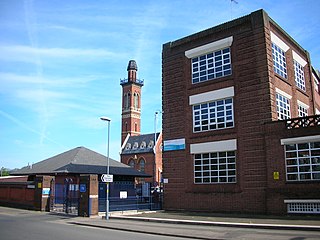
Edgbaston Waterworks lies to the east of Edgbaston Reservoir, two miles west of the centre of Birmingham, England.

John Henry Chamberlain, William Martin, and Frederick Martin were architects in Victorian Birmingham, England. Their names are attributed singly or pairs to many red brick and terracotta buildings, particularly 41 of the forty-odd Birmingham board schools made necessary by the Elementary Education Act 1870.

William Martin (1829–1900) was a British architect who worked in Birmingham, England, particularly in the practice Martin & Chamberlain.

Henry Richard Yeoville Yardley Thomason was a British architect active in Birmingham. He was born in Edinburgh to a Birmingham family, and set up his own practice in Birmingham 1853–54.

The Birmingham Hebrew Congregation, commonly known as the Singers Hill Synagogue, is an Orthodox Jewish synagogue in Birmingham, England. The synagogue is a Grade II* listed building, comprising 26, 26A and 26B Blucher Street in the city centre.
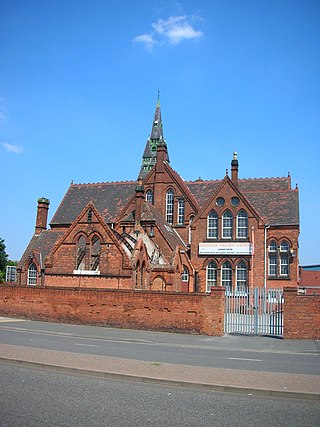
Icknield Street School, near the Hockley Flyover, north of the Jewellery Quarter, Birmingham, England, is a good example of a Birmingham board school. It is owned by Birmingham City Council.

The Church of St Agatha is a parish church in the Church of England in Sparkbrook in Birmingham, England.
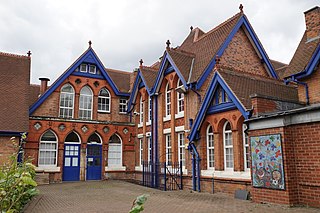
Ladypool Primary School is a 3–11 mixed, community primary school in Sparkbrook, Birmingham, West Midlands, England. It is a Grade II* listed building, and stands next to St Agatha's Church.

Small Heath Leadership Academy is a co-educational secondary school and sixth form located in the Small Heath area of Birmingham, England. The school serves an inner-city area of Birmingham.

The Great Western Arcade is a covered Grade II listed Victorian shopping arcade lying between Colmore Row and Temple Row in Birmingham City Centre, England.
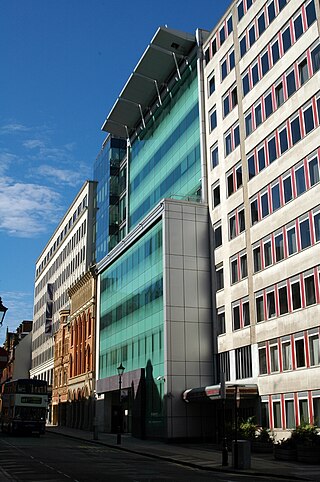
Edmund Street is a street located in Birmingham, England.
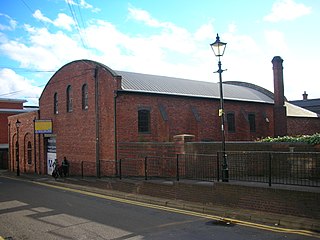
The Gas Retort House at 39 Gas Street, Birmingham, England is the last remaining building of Birmingham's first gas works.
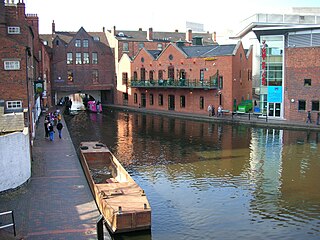
Gas Street Basin is a canal basin in the centre of Birmingham, England, where the Worcester and Birmingham Canal meets the BCN Main Line. It is located on Gas Street, off Broad Street, and between the Mailbox and Brindleyplace canal-side developments.

Oozells Street Board School was a Victorian board school in Oozells Street, off Broad Street in Birmingham, England. It is a Grade II listed building.
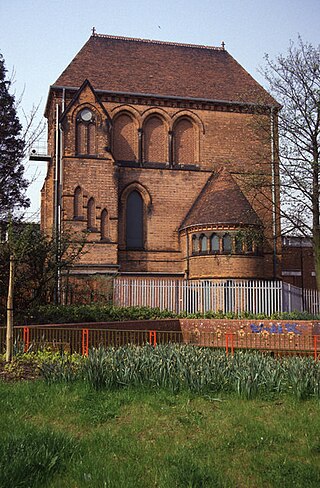
Selly Oak Pumping Station was a water pumping station operating in Selly Oak, Birmingham, England, from 1878 until the 1920s.
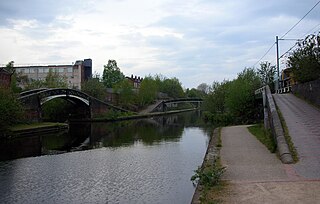
The Icknield Port Loop is a 0.6-mile (1 km) loop of the eighteenth-century-built Old BCN Main Line canal in Birmingham, England, about 2 miles (3 km) west of the city centre, which opened to traffic on 6 November 1769 and in some definitions includes its straighter bypass built in September 1827, a 550-yard (500 m) section of the New BCN Main Line. Most of the 56 acres (23 ha) of land thereby enclosed is derelict meaning the canal serves the Canal & River Trust maintenance depot at Icknield Port and conveys water from Edgbaston Reservoir to the BCN Main Line. The enclosed land has no pedestrian or vehicular access. Icknield Port (Loop) takes its name from the Roman Icknield Street which passed nearby, the exact route of which is unknown.

John Thackray Bunce was a British journalist and author. He served as editor of Aris's Birmingham Gazette from 1860 to 1862, and of the Birmingham Post from 1862 to 1898.






















